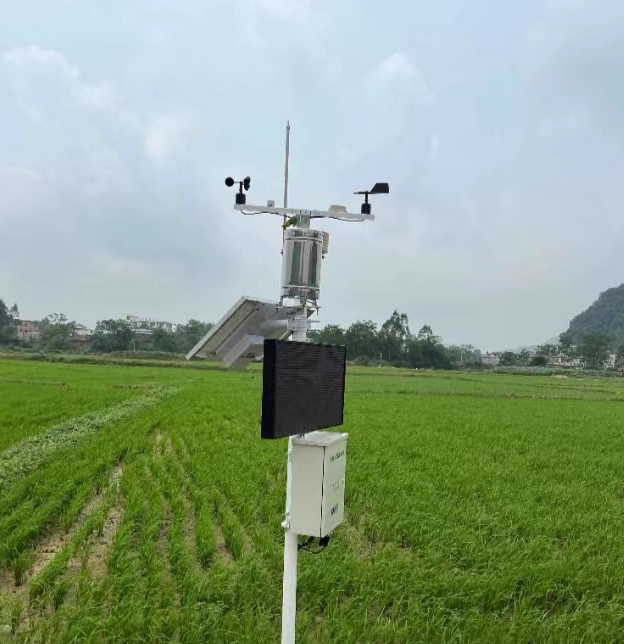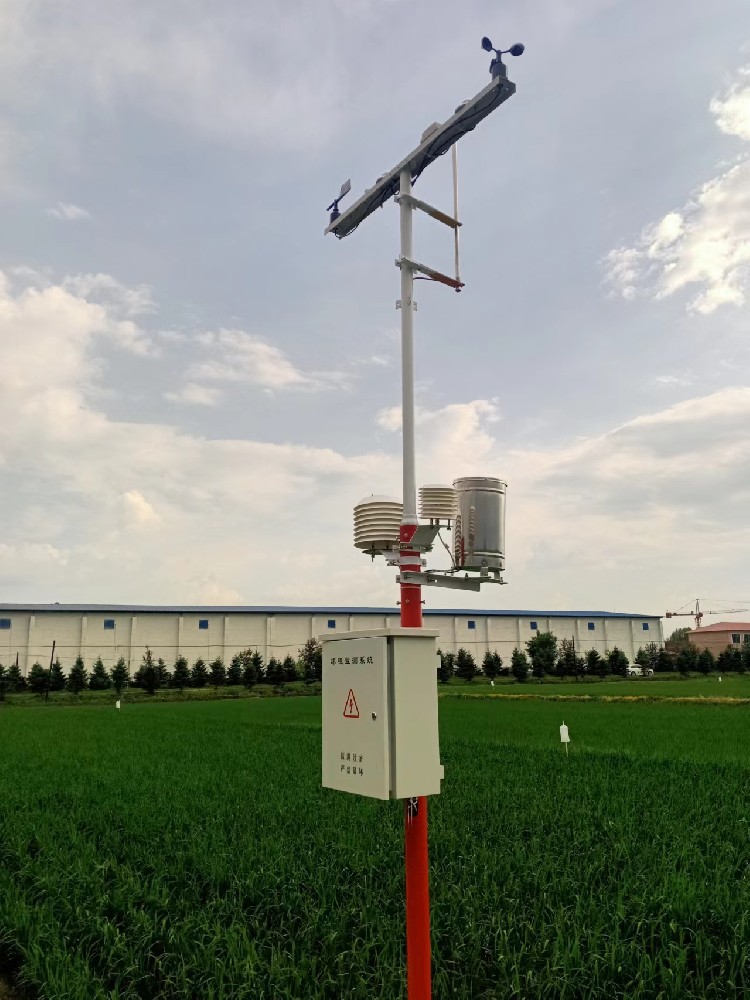

— Blogs —
—Products—
 Consumer hotline +8618073152920
Consumer hotline +8618073152920 WhatsApp:+8615367865107
Address:Room 102, District D, Houhu Industrial Park, Yuelu District, Changsha City, Hunan Province, China
Technical Support
Time:2024-08-28 16:03:11 Popularity:628
An environmental weather station is a monitoring device that integrates a variety of meteorological sensors, which is based on IoT, wireless communication and other technologies, and is capable of sensing and recording real-time changes in meteorological parameters 24 hours a day without interruption. These meteorological parameters include, but are not limited to, temperature, humidity, barometric pressure, wind speed, wind direction, light level, rainfall, carbon dioxide concentration, etc., which are of great significance for environmental management, climate research, and response to natural disasters.
Equipped with all kinds of advanced meteorological sensors and monitoring equipment, environmental weather stations are capable of collecting and transmitting meteorological data with high precision, providing scientific basis for decision-making in related fields. At the same time, the environmental weather station is also one of the important channels for the public to understand the weather conditions and prevent natural disasters.
Meteorological sensing equipment: including all kinds of sensors, such as air temperature and humidity sensors, soil temperature and humidity sensors, wind speed sensors, wind direction sensors, illumination sensors, barometric pressure sensors, rainfall sensors and so on, which are used to measure various meteorological parameters.
Data Acquisition System: Responsible for reading sensor data regularly or in real time, and carrying out preliminary processing and calibration.
Data processing system: receives and parses the data from the data acquisition system, carries out further storage and analysis, and displays them to the user in the form of charts and reports.
Communication module: supports data transmission in wired or wireless mode, ensuring that the data can be uploaded to the cloud platform or the designated data receiver in real time.
Protection host: responsible for the summary and transmission of meteorological parameters, monitoring and other functions.
Riser and accessories: used to install meteorological sensors, host and other equipment to ensure the stability and safety of the equipment.

Comprehensive consideration factors:
Choose a relatively flat and open place to ensure the accuracy and representativeness of meteorological data.
Consider the influence of topography and geomorphology, and avoid choosing areas that are prone to localised climatic features.
For mountainous and plain areas, choose suitable locations according to the differences in height and altitude to reflect the real climate conditions of the area.
Keep away from higher buildings and trees to avoid shading that affects the measurement of wind speed, wind direction, light and other parameters. Obstacles should be at least 10 times their height away from the weather station, at least 8 times isolated obstacles, and the lateral distance between two obstacles should not be less than 30 metres.
Avoid places with large magnetic fields, such as transformers, to prevent interference with sensors.
Ensure that there are no obvious sources of pollution around the site to avoid contamination of meteorological data.
The site should be selected to avoid areas with high incidence of natural disasters such as fires, floods, earthquakes, etc. to ensure the safe and stable operation of the meteorological station.
Keep away from industrial areas, chemical plants and other sites that may produce pollutants to avoid the impact of industrial exhaust on meteorological measurements.
Ensure that there is enough space around the meteorological station for the installation and maintenance of all kinds of meteorological sensors and monitoring equipment.

Choose a place with continuous and stable power supply conditions, either utility power supply or solar power supply, while the equipment should be firmly installed and well grounded to prevent accidental damage.
Ensure that there are good communication conditions around the site, so that the data can be uploaded in real time to the cloud platform or the designated data receiver.
Consider the safety of the site and avoid choosing areas prone to natural disasters.
The location of the site should be convenient for later daily management and maintenance, so that it can be repaired in time when the equipment fails.
For large cities or densely populated areas, the construction location of the weather station can consider natural parks, residential areas and other more open and easily accessible areas, so that the public can easily access meteorological information.
The installation of an environmental weather station needs to take into account the above principles to ensure the scientific and practicality of the data. When installed correctly, it can provide valuable data that is important for weather forecasting, climate research, agricultural management and many other areas.
In summary, the best place to place an environmental weather station is an area that takes into account geographic conditions, environmental factors, power supply and communication conditions, security and maintenance needs, and public needs. Following professional guidelines, such as the recommendations of the World Meteorological Organisation (WMO), is an important step in ensuring the effective operation of a weather station. By choosing the location of the station in a scientific and reasonable manner, we can ensure that the environmental weather station can operate accurately and stably and provide reliable meteorological services for production and life.
Related recommendations
Sensors & Weather Stations Catalog
Agriculture Sensors and Weather Stations Catalog-NiuBoL.pdf
Weather Stations Catalog-NiuBoL.pdf
Related products
 Combined air temperature and relative humidity sensor
Combined air temperature and relative humidity sensor Soil Moisture Temperature sensor for irrigation
Soil Moisture Temperature sensor for irrigation Soil pH sensor RS485 soil Testing instrument soil ph meter for agriculture
Soil pH sensor RS485 soil Testing instrument soil ph meter for agriculture Wind Speed sensor Output Modbus/RS485/Analog/0-5V/4-20mA
Wind Speed sensor Output Modbus/RS485/Analog/0-5V/4-20mA Tipping bucket rain gauge for weather monitoring auto rainfall sensor RS485/Outdoor/stainless steel
Tipping bucket rain gauge for weather monitoring auto rainfall sensor RS485/Outdoor/stainless steel Pyranometer Solar Radiation Sensor 4-20mA/RS485
Pyranometer Solar Radiation Sensor 4-20mA/RS485
Screenshot, WhatsApp to identify the QR code
WhatsApp number:+8615367865107
(Click on WhatsApp to copy and add friends)